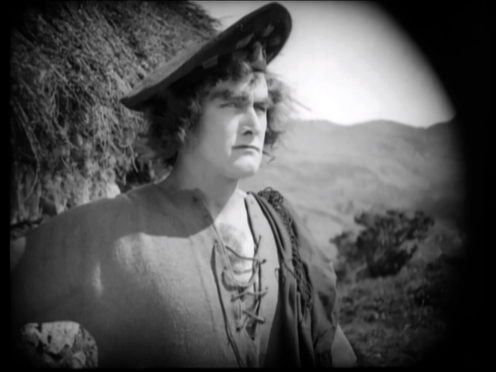
The scenes that greeted the film premiere of Rob Roy were, to quote a report from the time, “extraordinary”.
The Royal Scots Fusiliers marched to Sauchiehall Street from Maryhill Barracks, 250 wounded soldiers from military hospitals were transported to the cinema in convoys of ambulances, and the street became blocked with onlookers as the film’s star arrived in Glasgow.
This wasn’t the 1995 Liam Neeson retelling of the film, however, but a 1922 version starring English actor David Hawthorne as the titular Highland hero.
Almost 100 years on, a revived showing this week is unlikely to lead to scenes similar to those at The Salon in 1922 but it will, according to Alison Strauss, be a “triumph of the niche”.
Alison is the director of Hippfest, Scotland’s only silent film festival, back for its ninth year on Wednesday with a showing of Rob Roy.
Hosted by Scotland’s oldest cinema, The Hippodrome in Bo’ness, Alison says the festival’s growing success has proved a few people wrong.
“There were some doubters early on and it was questioned as to who would come,” she said. “But we’ve discovered there is an audience for this and it’s a festival for people who love cinema in general, rather than silent movies specifically.”
Rob Roy, which will feature a new score performed live by composer David Allison, was a major production of its time.
Filmed on location in the Trossachs and Stirling Castle, more than 800 men from the Argyll and Sutherland Highlanders were enlisted to act in one of its greatest battle scenes.
Although the opening titles claim: “To Scotland, not Scott, did we go for the facts on which our story is built”, historian David Bruce says the influence of Sir Walter Scott’s novels hang heavy over the film.
“He invented a version of the Highlanders with all the tartanry that is very popular,” said the former Scottish Film Council director.
Alison added: “It does have that sort of shortbread box thing going on.”
Also on this year’s Hippfest line-up is the UK premiere of the restored 1929 version of The Hound Of The Baskervilles, which was the last silent Sherlock Holmes film made and was discovered 10 years ago in a Polish priest’s basement, The Red Heroine, which is the oldest surviving Chinese martial arts film, and a Laurel and Hardy triple bill.

Enjoy the convenience of having The Sunday Post delivered as a digital ePaper straight to your smartphone, tablet or computer.
Subscribe for only £5.49 a month and enjoy all the benefits of the printed paper as a digital replica.
Subscribe